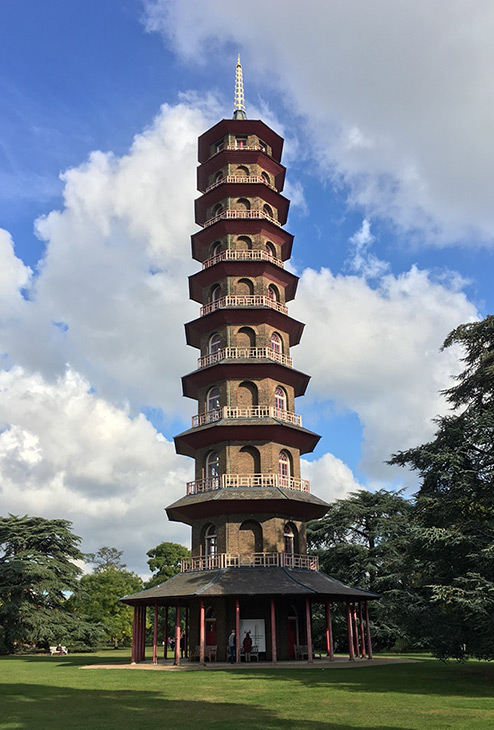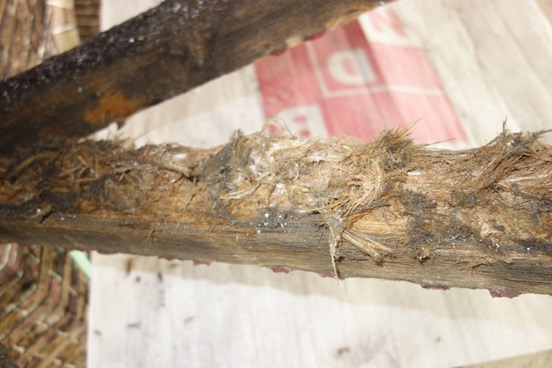Identifying and solving building problems environmentally without the use of chemicals
+44 (0) 1908 266522
Project Experience
The Great Pagoda, Kew Gardens
The Great Pagoda was designed by Sir William Chambers and completed in 1762 as a gift for Princess Augusta, the founder of the botanic gardens at Kew. It is a ten-storey octagon tower standing at almost 50m and each level is 30cm narrower than the one below.
A restoration project is underway to restore the Great Pagoda to its original 18th century splendour. This includes the original 80 dragons, which originally adorned the roofs, each carved from wood and gilded in gold leaf.

EBS Ltd was asked to inspect the exposed timbers of the 10 roof structures for condition including any dry rot infestation, wet rot infestation and wood boring insect attack. The roofs were generally found to be structurally sound with only some localised longstanding wet rot damage and old inactive woodworm. However many of the timbers had surface damage associated with atmospheric pollution. The most common form of this is sulphate attack where the wood becomes defibrated and covered in powdery crystals, see attached photograph. The attack was only on the surface and did not result in structural damage.

Sulphate attack where the wood becomes defibrated and covered in powdery crystals.
EBS Ltd environmental approach ensured that only those localised areas that were damaged were repaired. No remedial chemical treatments were required and the maximum amount of the original structure was retained and restored to its former glory.

